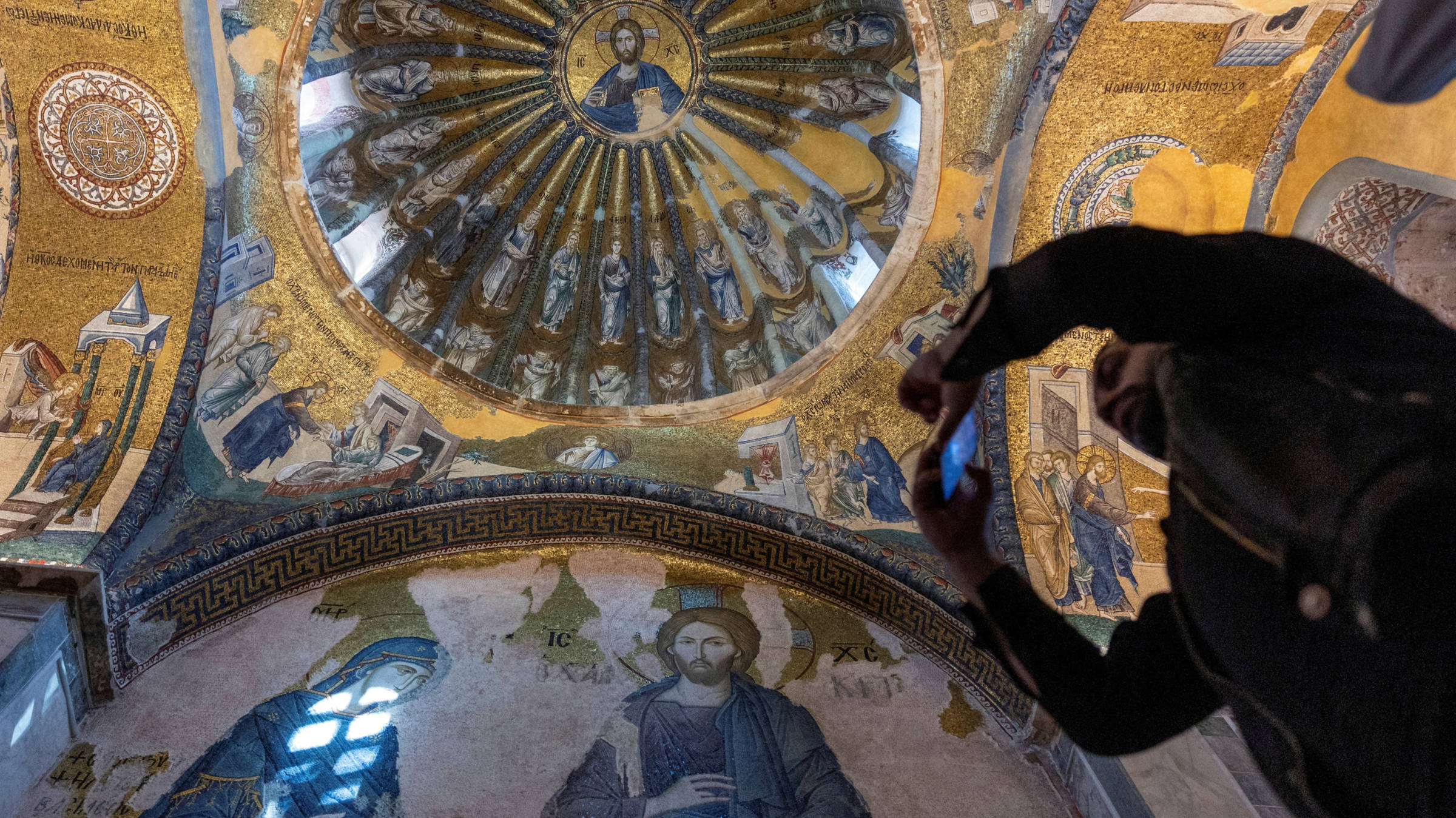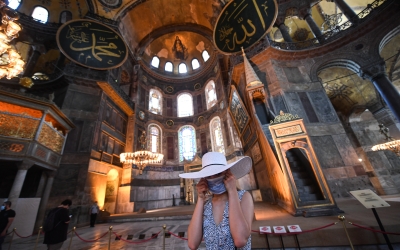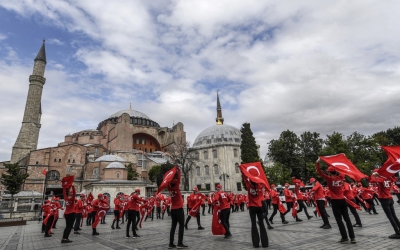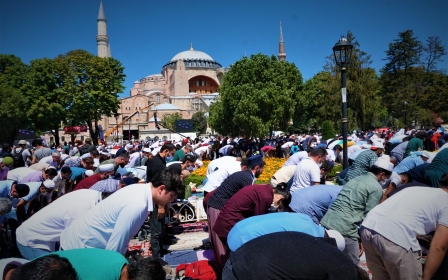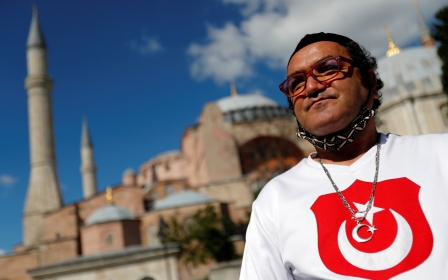Turkey: Chora church, turned mosque then museum, is a mosque again
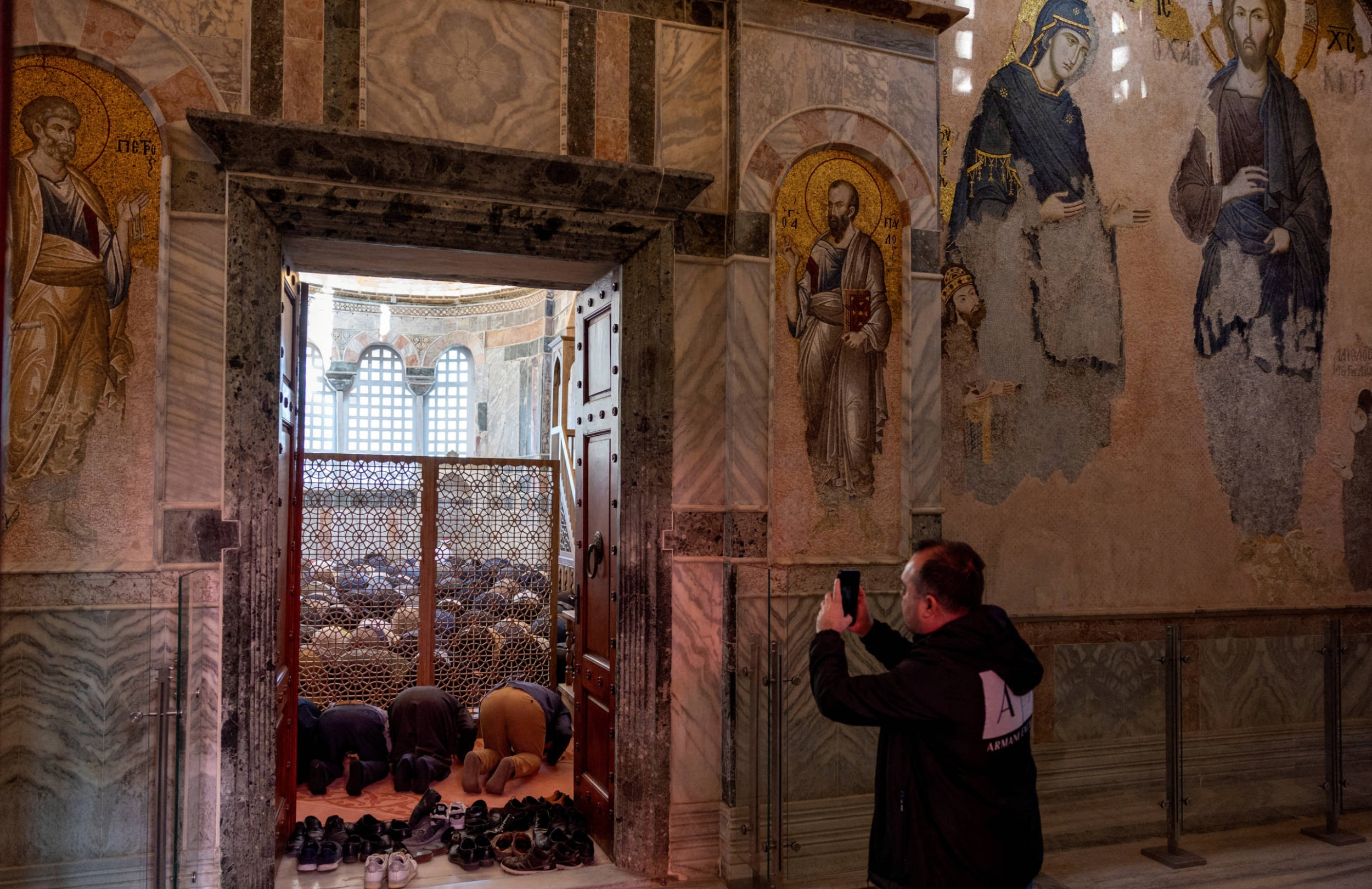
Nestled in the historic Istanbul neighbourhood of Edirnekapi, the Kariye Mosque, formerly known as the Chora Museum, and before that as the Chora Church, stands as a testament to the city’s layered history and its cultural metamorphosis over centuries that continues even today.
Originally built as a church, transformed into a mosque, later turned into a museum, and recently reconverted into a mosque again, this remarkable site offers visitors a deep dive into the Byzantine and Ottoman legacies.
After 79 years, Turkey reopened the Kariye Museum as a mosque two weeks ago, amid criticism from the US and Greece.
Like the Hagia Sophia a decade earlier, the structure was turned into a museum in 1945 for its historical significance and following the unearthing of stunning mosaics and frescos.
The building now offers visitors a dual experience as both a mosque and a museum.
New MEE newsletter: Jerusalem Dispatch
Sign up to get the latest insights and analysis on Israel-Palestine, alongside Turkey Unpacked and other MEE newsletters
Upon entering the building, after a security check, a group of Orthodox Russian tourists, consisting of veiled women, can be seen wandering inside and murmuring prayers as they gaze upon the mosaics relaying stories from the Bible. Other tourists were simply taking photos and videos, while admiring the ancient structure, its art and history.
Simultaneously, Muslims were gathering in the worship section, under the main dome, praying and reciting the Quran before a muezzin began calling for prayer.
“This is a holy place for us. With its centuries-old history, we feel like we are doing a pilgrimage here,” one of the Russian tourists told Middle East Eye. “It’s sad to see it as a mosque.”
In the prayer section, meanwhile, two local men said they were so happy for the re-opening of the building as a mosque, even if only partially.
“After Hagia Sophia, praise be to God, we’ve seen Kariye as a mosque,” one of them said.
“Our ancestors conquered this city, turned this building into a mosque. So, it must remain as a mosque.”
But what exactly makes the debate about this relatively small historic building so controversial, even dragging the US State Department into it?
Here is a brief look at its history.
A place of worship
Its origins trace back to the early fourth century when a group of Christians built a monastery on the remains of a pagan temple. Despite varying historical narrations, it is certain that prominent early Christians like Saint Babylas of Antioch or Saint Theodore of Tiron were likely to be amongst its founders or visitors.
However, archaeological works indicate that the earliest parts of the current building go back to the sixth century while the building itself was built in the fourteenth century.
'Our ancestors conquered this city, turned this building into a mosque. So, it must remain as a mosque'
- Turkish worshipper
Chora, Kariye in Turkish, is believed to be ancient Greek for “countryside” as its location, which currently is in the centre of modern day Istanbul, was once outside the city.
The monastery's residents were therefore able to maintain a life of seclusion, far from the palace and the city’s tumultuous atmosphere. Several patriarchs or even palace people, who intentionally or unintentionally lost their influence and power, found a safe haven in Chora, and were eventually buried within or around this sacred place.
At the beginning of the 13th century, the Latin Occupation left the church in ruins but soon after the retreat of the Latin army, Byzantine emperors renovated and re-decorated the building.
When the Ottomans conquered the city, the first gate they used to enter was Adrionople, or Edirnekapi, a few hundred metres away from the Chora Church. According to Byzantine chronicles, the lavishly decorated church was looted, while many statues were broken to pieces.
For the next 58 years, the church remained empty, mainly due to its location away from the city centre.
During the reign of Bayezid II, Atik Ali Pasha ordered its renovation and transformation into a mosque in 1509. The structure has since been used as a mosque, adorned with Islamic art, and transformed into one of the most sacred places in Istanbul.
A tomb of one of Prophet Muhammad's companions, Abu Said al-Khudari, was erected within Kariye's garden. Khudari is believed to have travelled to Istanbul during the Ummayad era to conquer the city and killed just outside the city.
The turn of the 20th century brought a renewed interest in Byzantine heritage across Europe, leading to the rediscovery of the artistic significance of the Chora church.
Restoration work began in the 1940s, spearheaded by the Byzantine Institute of America. These efforts were monumental, revealing the breathtaking mosaics and frescoes that had been covered by a layer of plaster, in compliance with Islamic tenets of aniconism, and had unintentionally preserved the art for nearly 500 years.
In 1945, the Turkish government decided to allow the Byzantine Institute of America to take control of the renovation and reopen it as a museum. The renovation campaign was however very hostile towards the Ottoman heritage, resulting in the destruction of any Muslim or Ottoman displays in the building, including the Islamic calligraphy adorning the walls and hand-made carpets.
Museum-mosque controversy
A 2020 presidential decree declared the structure's conversion into a mosque once more. After years of restoration, many were curious whether the mosque would be closed to tourists.
But the building was reopened as a museum-mosque, where both worshippers and visitors are allowed.
Tourists are allowed to enter without proper Islamic clothing or taking off their shoes, as Muslims do when entering a mosque, walk inside the halls embellished with mosaics, and view the frescos and crosses that decorate the walls. Muslim worshippers can meanwhile pray in a room inside the nave, where three mosaics depicting the Virgin Mary and Christ are covered with curtains that would be drawn open outside of prayer time.
Still, Greece has voiced its displeasure with Chora's conversion into a museum and a mosque. Giorgos Koumoutsakos, Greece's permanent representative to Unesco, has told the UN cultural agency in Paris that Athens was concerned about the impact the conversion would have on the building.
Kariye’s re-opening coincides with an era of detente between Greece and Turkey.
Greek Prime Minister Kyriakos Mitsotakis, who has expressed his “discomfort” with the conversion, is visiting Turkey this week. He is expected to share his feelings on the subject with Turkish President Recep Tayyip Erdogan.
However, unlike many other Greek churches that have been continuously used as church since the Ottoman conquest in 1453, the ownership of Kariye does not belong to the Greek Patriarchate but to Turkey’s Religious Directorate.
A US State Department official has also asked Turkey to respect the building’s diverse history: “We encourage the Turkish government to preserve and ensure access to sites and buildings that have hosted different religious communities in a way that respects their diverse histories.”
That said, unlike some other churches that are currently used as mosques, the artefacts, art, and ornaments in Kariye remain visible to visitors.
Amid the controversy, the vendors in Kariye's vicinity seem to be happy that the building has taken on a hybrid form.
“People can go inside and pray while tourists can go inside and see what they want. This is good because the circulation of tourist groups increased in the last two weeks and will definitely increase more in the summertime,” a shop owner near the building said.
Middle East Eye delivers independent and unrivalled coverage and analysis of the Middle East, North Africa and beyond. To learn more about republishing this content and the associated fees, please fill out this form. More about MEE can be found here.


